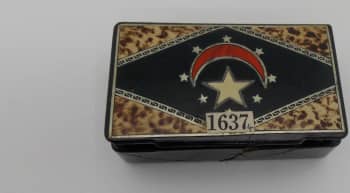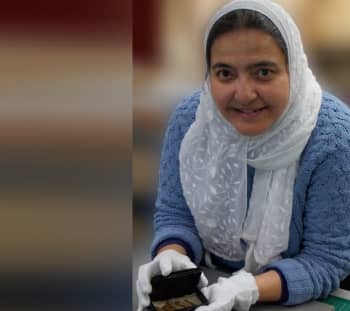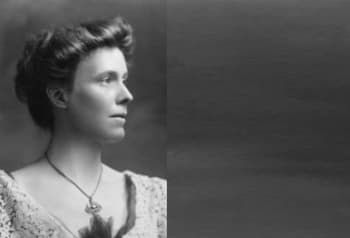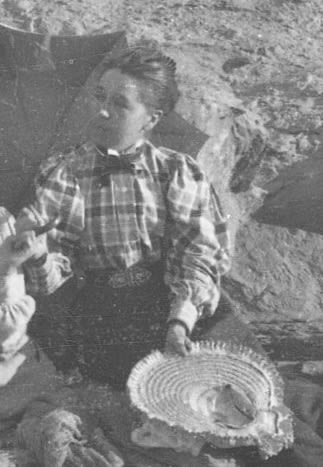Celebrating the 'trowel blazing' women who pioneered the study of Ancient Egypt

When curatorial assistant Abeer Eladany uncovered one of only three objects ever recovered from inside the Great Pyramid hidden in the University of Aberdeen’s collections, it was a remarkable find. Not only did it shed new light on a 70 year-old mystery but it proved a fitting discovery for Abeer – an Egyptian archaeologist who has previously spent 10 years working in the Egyptian Museum in Cairo.
The find made news headlines around the world but Abeer was not the first female Egyptologist from the University of Aberdeen to create a stir. She follows in a tradition of women who have made an impact on the study of these vast and imposing wonders, while based in north-east Scotland.
Missing 5,000-year-old fragment discovered
In December 2020, the University announced a chance discovery which could shed new light on the Great Pyramid.
It had long been known that in 1872 the engineer Waynman Dixon discovered a trio of items inside the pyramid’s Queens Chamber, which became known the ‘Dixon relics’.
Two of them - a ball and hook - are housed in the British Museum but the third – a fragment of wood -had been missing for more than 70 years.
In 2001 a record was identified which indicated the wood fragment may have been donated to the University of Aberdeen’s museum collections as a result of a connection between Dixon and James Grant, who was born in Methlick in 1840.
Grant studied medicine at the University and in the mid-1860s went to Egypt to help with an outbreak of cholera where he befriended Dixon and went on to assist him with the exploration of the Great Pyramid, where together they discovered the relics.
Then Abeer, working as a curatorial assistant, began a review of items housed in the University’s Asia collection.
She was intrigued to discover a box which seemed out of place as it had Egypt’s former flag on the top.
Her detective work to cross reference it with the Egypt records revealed she was holding something very special – the 5,000-year-old fragment which had eluded discovery for seven decades.
Speaking at the time Abeer said: “I’m an archaeologist and have worked on digs in Egypt but I never imagined it would be here in north-east Scotland that I’d find something so important to the heritage of my own country.
“It may be just a small fragment of wood, which is now in several pieces, but it is hugely significant given that it is one of only three items ever to be recovered from inside the Great Pyramid.
“The University’s collections are vast – running to hundreds of thousands of items – so looking for it has been like finding a needle in a haystack. I couldn’t believe it when I realised what was inside this innocuous-looking cigar tin.”
Radiocarbon dating revealed the wood fragments dated from 3341-3094BC – some 500 years earlier than historical records which date the Great Pyramid to the reign of the Pharaoh Khufu in 2580-2560BC - supporting the idea that, whatever their use, these relics were original to the construction of the Great Pyramid and not later artefacts left behind by those exploring the chambers.
But Abeer is not the only female Egyptologist to have left a mark on the University’s collections and to have contributed to our understanding of this ancient world.



Nora Griffith
Nora Griffith was a pioneering woman from north-east Scotland prepared to embrace the wider world and to tread in places well beyond the domesticity expected of the time.
Born Nora Macdonald in 1870 in Newmachar, near Aberdeen, she became a skilled photographer, illustrator and curator with an expertise in ancient and modern languages.
Her interest in Ancient Egypt and its relics was cemented when she become a conservator in the archaeological museum of King’s College, Aberdeen where she worked on the display of the Grant Bey collection.
Nora took courses in Egyptology at Oxford and in 1909, at the age of 39, married the eminent Egyptologist Francis Griffith.
Nora meticulously assisted her husband in his studies and excavations for the next 20 years in Egypt and Nubia from 1910-13 and in 1923, 1929 and 1930.
These assignments were not without their challenges - even in academic circles, women were usually expected to stick to secretarial or library duties. Despite publishing articles in the Journal of Egyptian Archaeology as well as Sudan Notes and Records, the first of which was published in 1923, she was not widely acknowledged in Egyptology circles despite her husband’s praise for her collaborative effort.
When Francis died in 1935 she completed the work he had started, including the production of 70 coloured ‘plates’ of her photographs and drawings for his posthumously published book ‘Demotic Graffiti in the Dodeca Schoenus’. She also continued to organise and fund further excavations and to expand the large Egyptological library they had built together .
Nora died in 1937 at the age of 66 following complications from surgery for appendicitis.
The library, papers, excavation records and funds were bequeathed upon her death to the University of Oxford to create the Griffith Institute.
Nora also left a legacy at the University of Aberdeen through her work initially as a volunteer and later as a paid curator, a position she was appointed to in November 1900.
Abeer said: “Nora is still remembered here as a pioneering Egyptologist breaking boundaries at a time when the field was very much male dominated.
“She inscribed the labels for the new display as well as cataloguing thousands of objects. I have spent many hours transcribing these and it gives you a real insight into her vast knowledge of ancient Egyptian history, art and language, which although aligned to ideas of the time, still help to inform our understanding today. ”
In doing so, she followed a path also trodden by Annie Abernethie Pirie, another woman who bucked trends to dedicate her time to the study and preservation of objects from ancient Egypt.

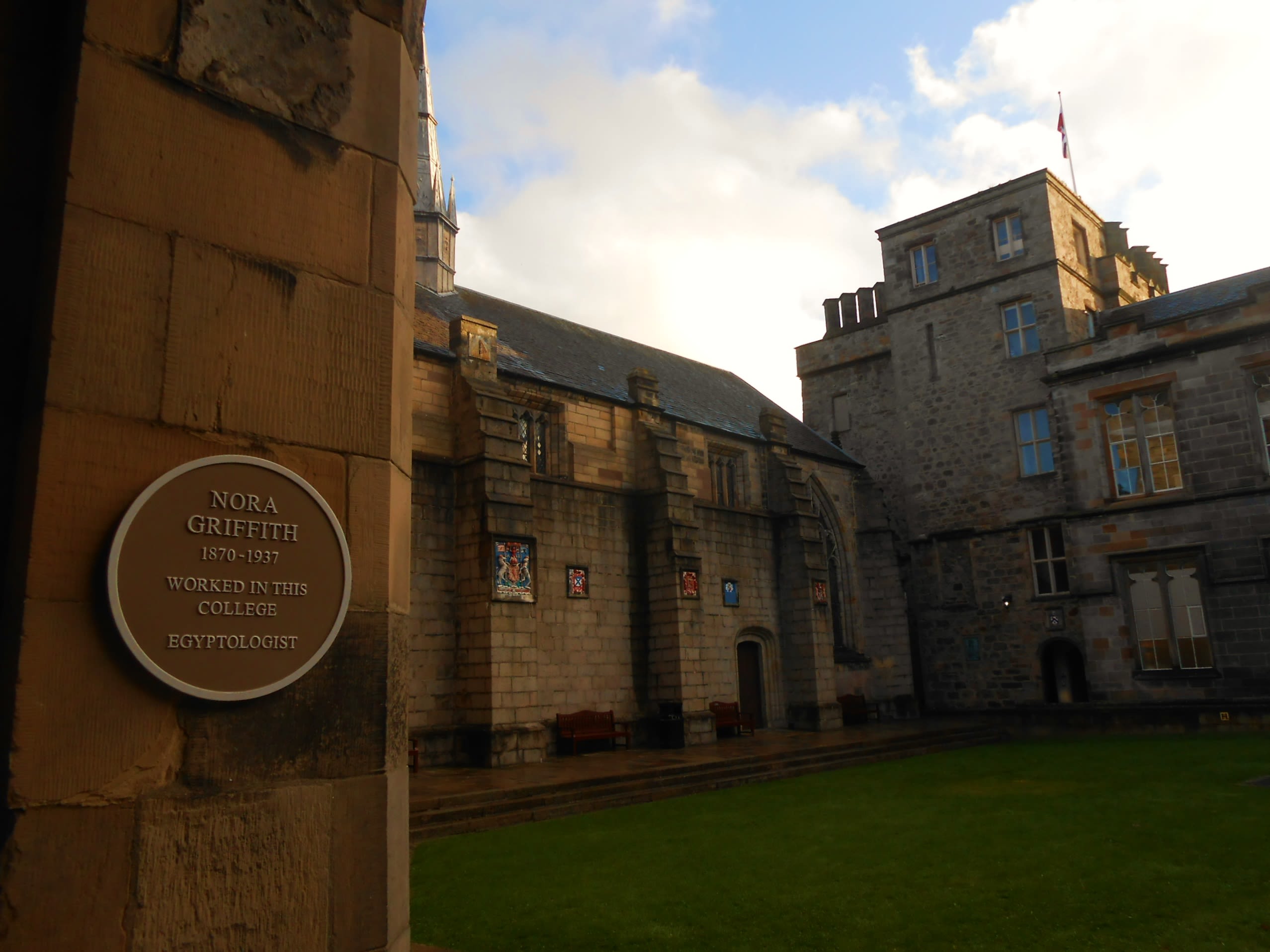
Annie Abernethie Pirie
Born just eight years before Nora, Annie Abernethie Pirie (1862 – 1927) was another Aberdonian woman leading the way in the discipline.
Originally trained as an artist in Paris and a member of the Aberdeen Artist Society, she was among the first women to study Egyptology at University College London.
She gained her initial experience working as a volunteer curator and Egyptologist at the University of Aberdeen and was a source of help and support when Nora Griffiths also arrived to work on the collections. Annie was responsible for arranging the Egyptian gallery at King’s Museum .
Following her London studies, Annie joined her tutor - the celebrated archaeologist William Matthew Flinders Petrie - on excavations at several key sites including one of the earliest temples in Egypt, at Hierakonpolis .
During the season she met James Edward Quibell, Petrie’s assistant. Their excavation work together soon turned to love and they were married in 1900.
His work as an Inspector of Antiquities meant the couple built a life together in Egypt and Annie expressed her contentment at time spent in tombs and shafts where ‘one has to be careful not to fall in’.
Abeer says that the work of both Annie and Nora was often less visible at the time but should be acknowledged now.
“Any significant discoveries at that time were usually credited to the male archaeologists in charge of the dig but the role played by the Egyptian workforce and women - although vital to the advancement of the field - was never highlighted,” she adds.
“Both were talented artists and the intricate, detailed drawings they produced have played an important part in our understanding of ancient Egyptian artefacts.
"It is inspirational to see what women can achieve when they come together to support each other and remarkable to think that Aberdeen had two female Egyptologists in such a short space of time.
“It is a joy to come across a handwritten label and know that you are treading in the footsteps of these pioneering Aberdonian Egyptologists .”
Annie Pirie in 1898
Annie Pirie in 1898
Part of the Egyptian Exhibit at the World's Fair where she curated an exhibit with her husband
Part of the Egyptian Exhibit at the World's Fair where she curated an exhibit with her husband
“It is inspirational to see what women can achieve when they come together to support each other and remarkable to think that Aberdeen had two female Egyptologists in such a short space of time.


University collections: European and Mediterranean Archaeology
The University of Aberdeen's collections from Egypt remain internationally significant today and are the second-largest in Scotland, with over 6,000 items.
There are also excavated assemblages from Egypt, Palestine and Mesopotamia. There is a notable highlight in Ancient Greek ceramics, complementing the impressive Greek and Roman coin collections.
The important early 19th century collections of Dr Robert Wilson from Italy, Greece, Egypt and Mesopotamia are particularly enhanced by their association with his library and archives held by the University.


